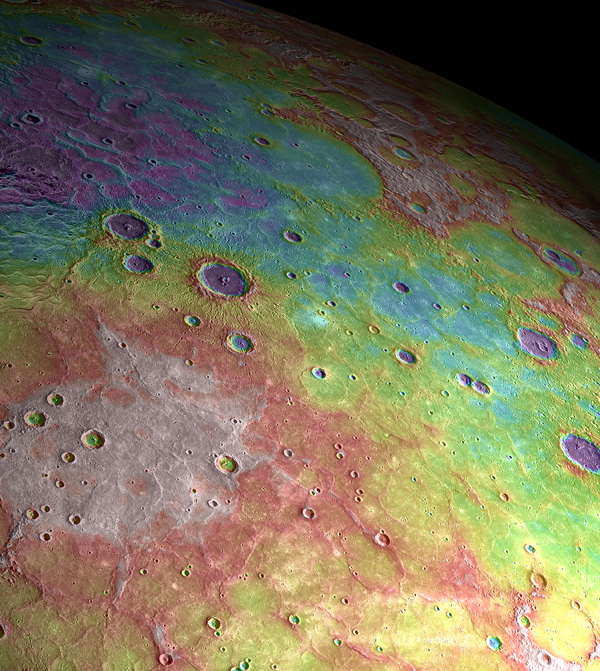We're open daily! View holiday hours
Science News
Mercury!
March 22, 2012

Mercury, our Solar System’s smallest and innermost planet is in the spotlight this week—all thanks to the tiny MESSENGER spacecraft. Launched in 2004, MESSENGER only began studying the planet in-depth a year ago. Its proximity to the Sun makes Mercury a tricky destination. According to NPR, “If you launch a rocket toward the sun, the sun's gravity is going to cause your spacecraft to speed up.”
Since March 2011, MESSENGER has taken 100,000 images of Mercury, revealing some interesting details of the planet, as presented this week at the Lunar and Planetary Science Conference and two new papers in Science.
One paper reports on the topography of Mercury’s northern hemisphere. Some of the findings were surprising, explains Scientific American:
MESSENGER found several topographic features that appear to have tilted over time, suggesting that Mercury was geodynamically active for a longer period than expected. It may even be active today.
The other paper exposes the small planet’s core. While always thought to be larger than Earth’s, Mercury’s core is much bigger than previous estimates—about 85% of the planetary radius. (Earth’s core is about 55%.)
Mercury's core is different from any other planetary core in the Solar System. Earth has a metallic, liquid outer core sitting above a solid inner core. Mercury appears to have a solid silicate crust and mantle overlying a solid, iron sulfide outer core layer, a deeper liquid core layer, and possibly a solid inner core. These results have implications for how Mercury's magnetic field is generated and for understanding how the planet evolved thermally.
(ScienceNOW has a great description of how the core is measured, “without laying a finger on the planet.”)
The mission's many successes have allowed it to be extended for another year. "The first year of MESSENGER orbital observations has yielded a wonderful harvest of results," says MESSENGER Principal Investigator Sean Solomon, of the Carnegie Institution and a coauthor of the two papers.
Image: NASA/JHUAPL/CIW-DTM/GSFC/MIT/Brown University. Rendering by James Dickson and Jim Head